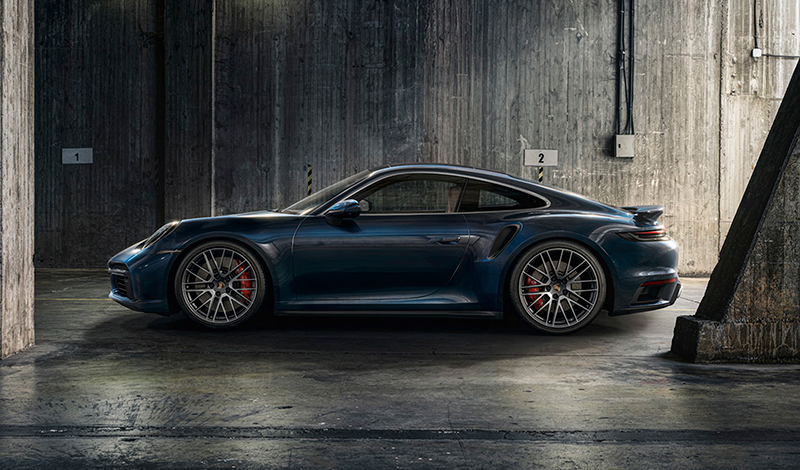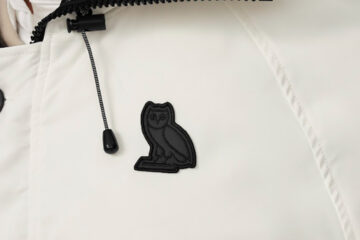The new generation Porsche 911 turbo: Accelerating powerful Performance
Continuing a 45-year tradition, the new Porsche 911 Turbo Coupe and Cabriolet are among the world’s best high-performance sports cars.
The Porsche 911 Turbo has always stood out among the world’s high-performance sports cars. Even the word “turbo” has been perhaps the most apt description of power and performance in automotive circles for the past 45 years. Now, following the market launch of the 911 Turbo S, comes the next generation 911 Turbo Coupe and Cabriolet even more powerful and faster than before, with both model variants dipping under the magic three-second 0–100 kilometres per hour (km/h) mark, with a time of 2.8 seconds. That is serious speed — in a serious sports car.
The new models are following a prestigious tradition of luxury and performance, since the Porsche 911 Turbo was first introduced in 1975, with each generation continuing to be the global benchmark for high-performance sports cars. It is notable that advancements by Porsche over the years mean that this latest generation of the two-plus-two seater is actually more than twice as powerful as the original Turbo. And while the 911 Turbo may have become faster, larger and more comfortable over the years, it has always maintained the fundamental characteristics that make the Porsche 911 Turbo so distinctive and so respected.
These enhanced versions of the 911 Turbo Coupe and Cabriolet represent significant advancements in pure power, with both models featuring 572-horsepower (hp) engines — 32-hp more than their predecessors. A torque of 553 pounds per foot (an increase of 47), now without an over-boost time limit, makes quick acceleration even more effortless. Power transmission is performed by an eight-speed PDK gearbox with a Turbo-specific set-up, while its top speed remains unchanged at 320 km/h — a hallmark of Porsche performance.
The new 911 Turbo’s 3,745-cm3 six-cylinder boxer engine now also features symmetrical VTG turbochargers, with electrically controlled bypass valves. In conjunction with its redesigned charge air-cooling system is the use of piezo injectors, improving responsiveness, performance, torque characteristics and its ability to rev freely.
The chassis and body have become wider on this new generation, and the front axle now steers even more precisely, thanks to an additional 42 millimetres of front track width and new 20-inch 255/35 tires. Traction at the actively steered rear axle is increased by a track that is 10 millimetres wider, as well as 315/30 tires on 21-inch wheels, one inch more than on the front axle.
Options such as the sports chassis and sports exhaust system are available with the 911 Turbo for the first time. Two different chassis variants are also new: while the standard PASM chassis offers a greater spread between classic Porsche sportiness and comfort, the significantly firmer, electrically controlled 10-millimetre lower sports suspension benefits the agility of these new Porsche 911 Turbos. Its set-up is aimed at enhancing the car’s dynamics and provides even more stability in high-speed driving, such as when the vehicle is used on race circuits.
If possible, the design of the 911 Turbo has become even more dynamic and muscular. The body has been widened by 45 millimetres, to 1,840 millimetres at the front wheels, to accommodate the new chassis. And the car’s sporty character is further emphasized by the new bonnet’s striking swage line. Other distinguishing features of the new 911 Turbo are the enhanced adaptive aerodynamics, which feature electronically controlled cooling air flaps at the front; its larger active front spoiler; and the significantly larger variable rear spoiler.
The interior cabin has perfectly placed touch controls, which have always identified the Porsche 911 Turbo, and these new models have interiors corresponding to those of the famous 911 Carrera models, with Porsche Advanced Cockpit and Direct Touch Control. The centre screen is now 10.9 inches and can be operated quickly and without distraction. The extensive equipment list includes a fully electrically controlled 14-way sports seat and a multi-function GT sports steering wheel with shift paddles and mode switches, as well as the powerful BOSE Surround Sound System.
The new generation of the 911 Turbo Coupe and Cabriolet are now available to order and are scheduled to arrive in Canada early next year. Pricing for the 2021 911 Turbo Coupe starts from $194,400, and the 2021 911 Turbo Cabriolet starts from $209,000. For drivers who appreciate high-performance sports cars, the Porsche 911 Turbo Coupe and Cabriolet should be at the top of any test-drive list.

















































































